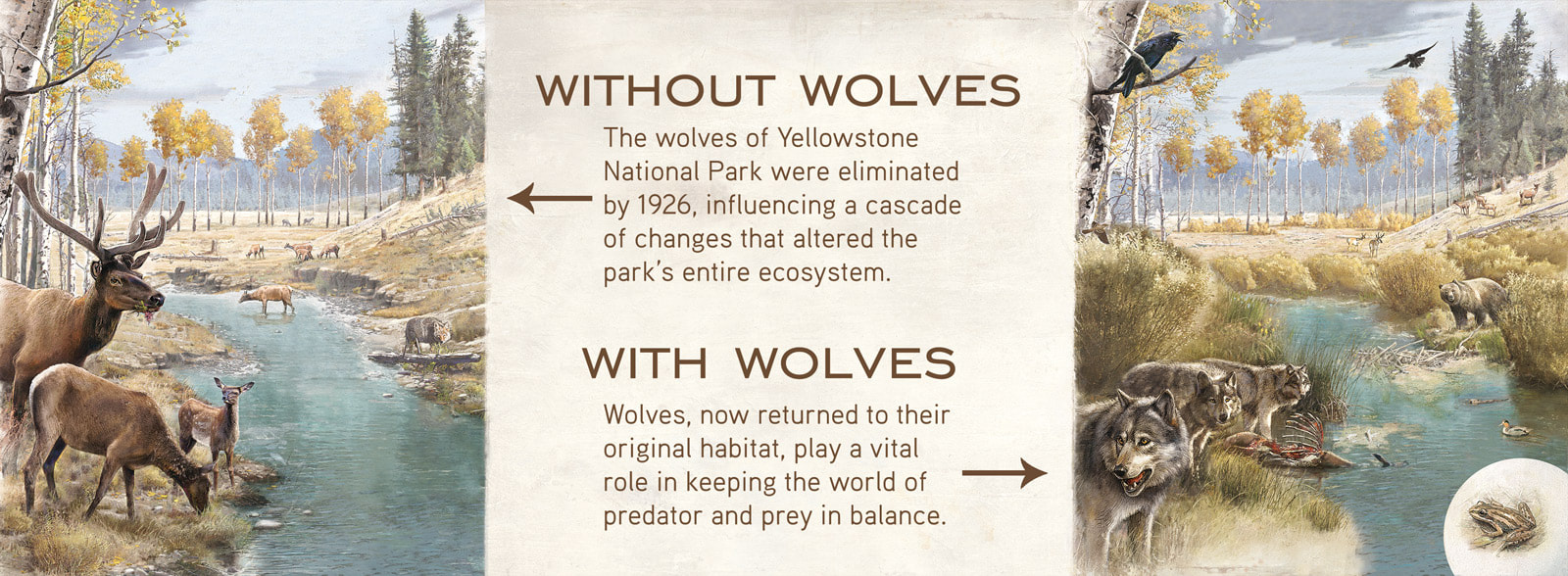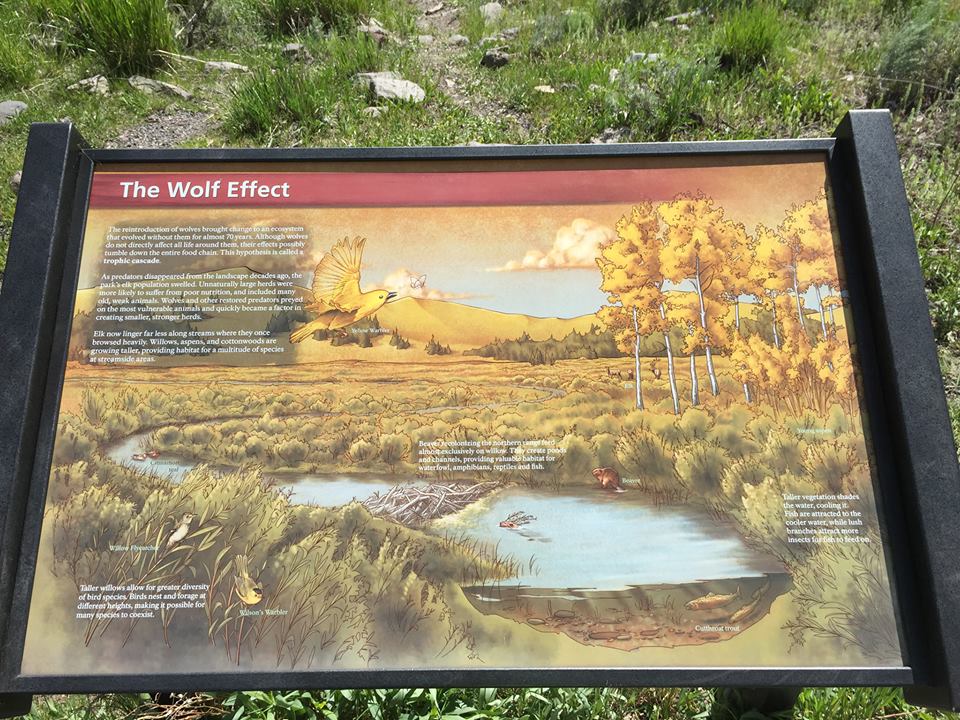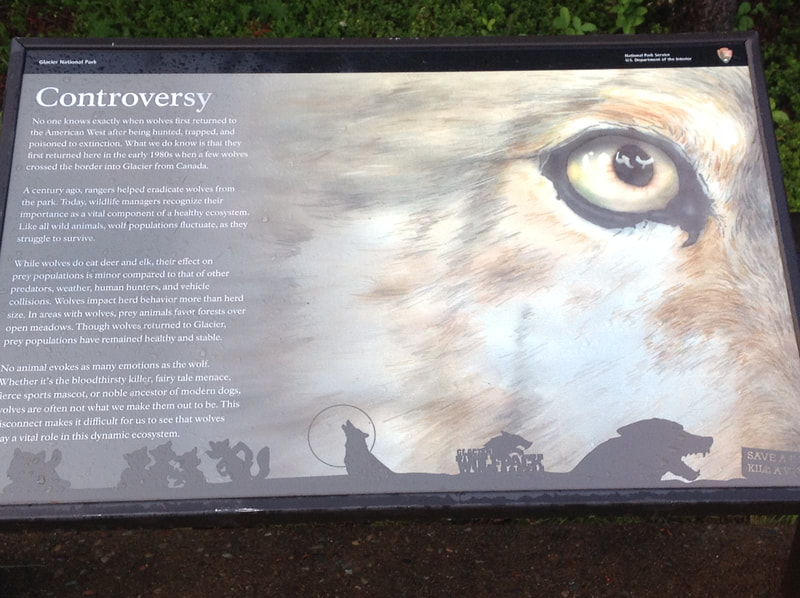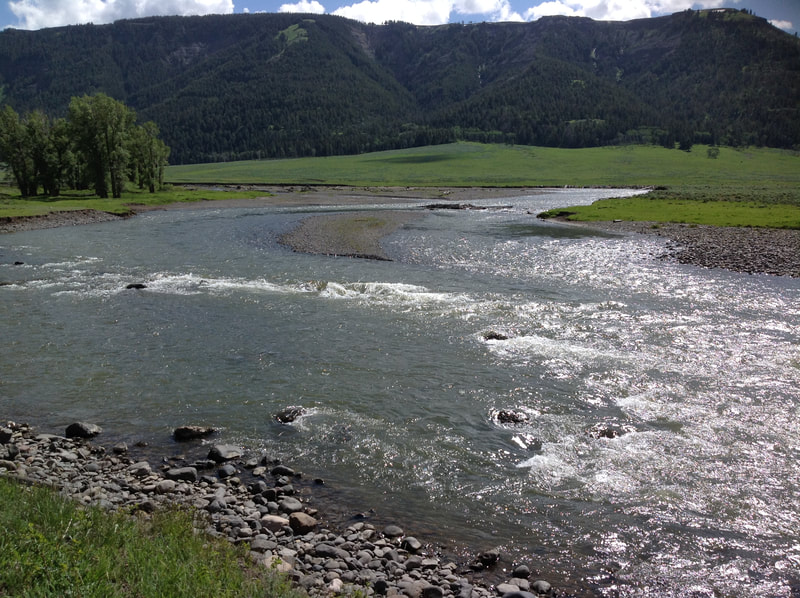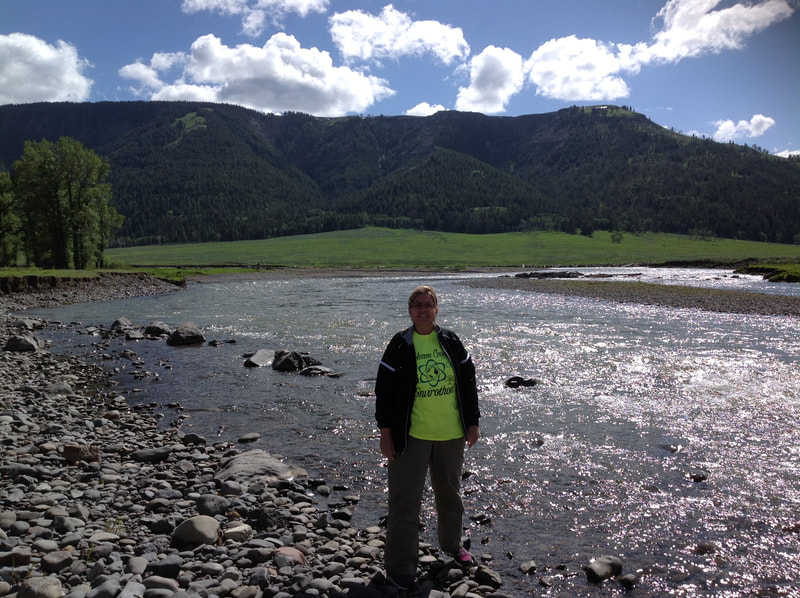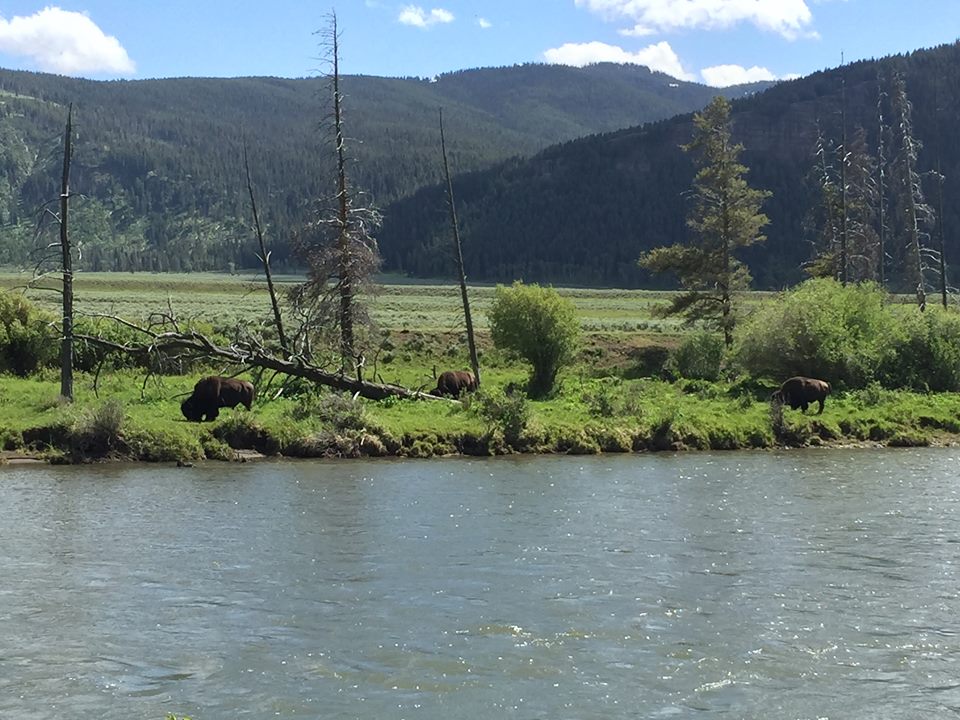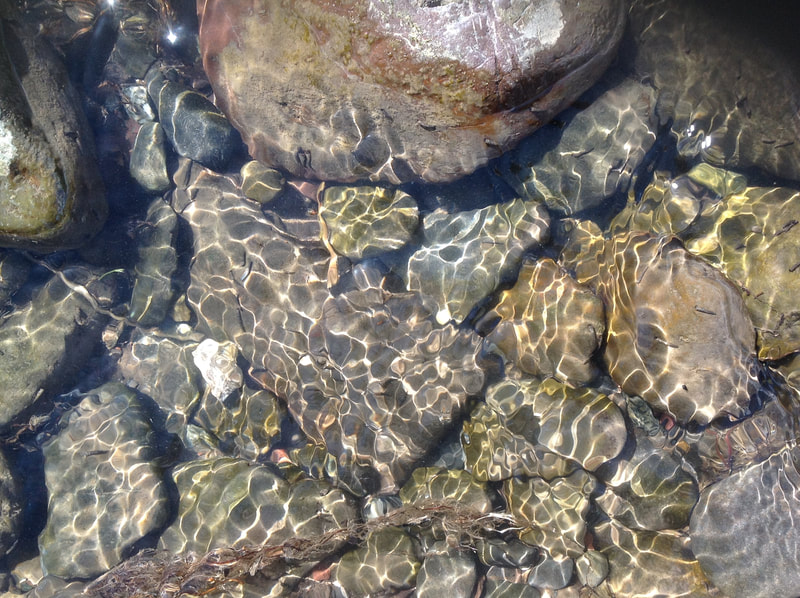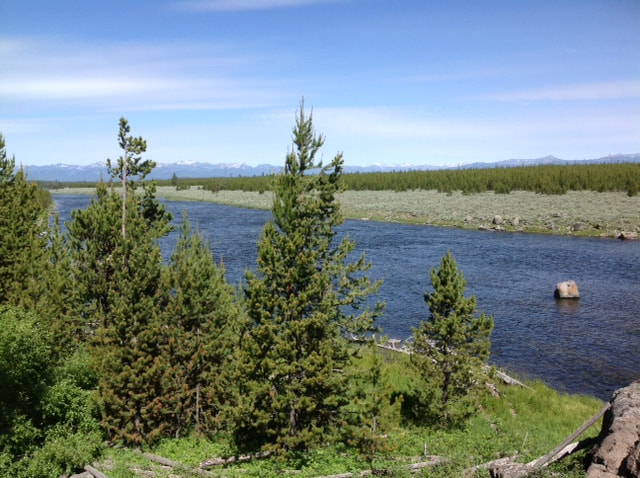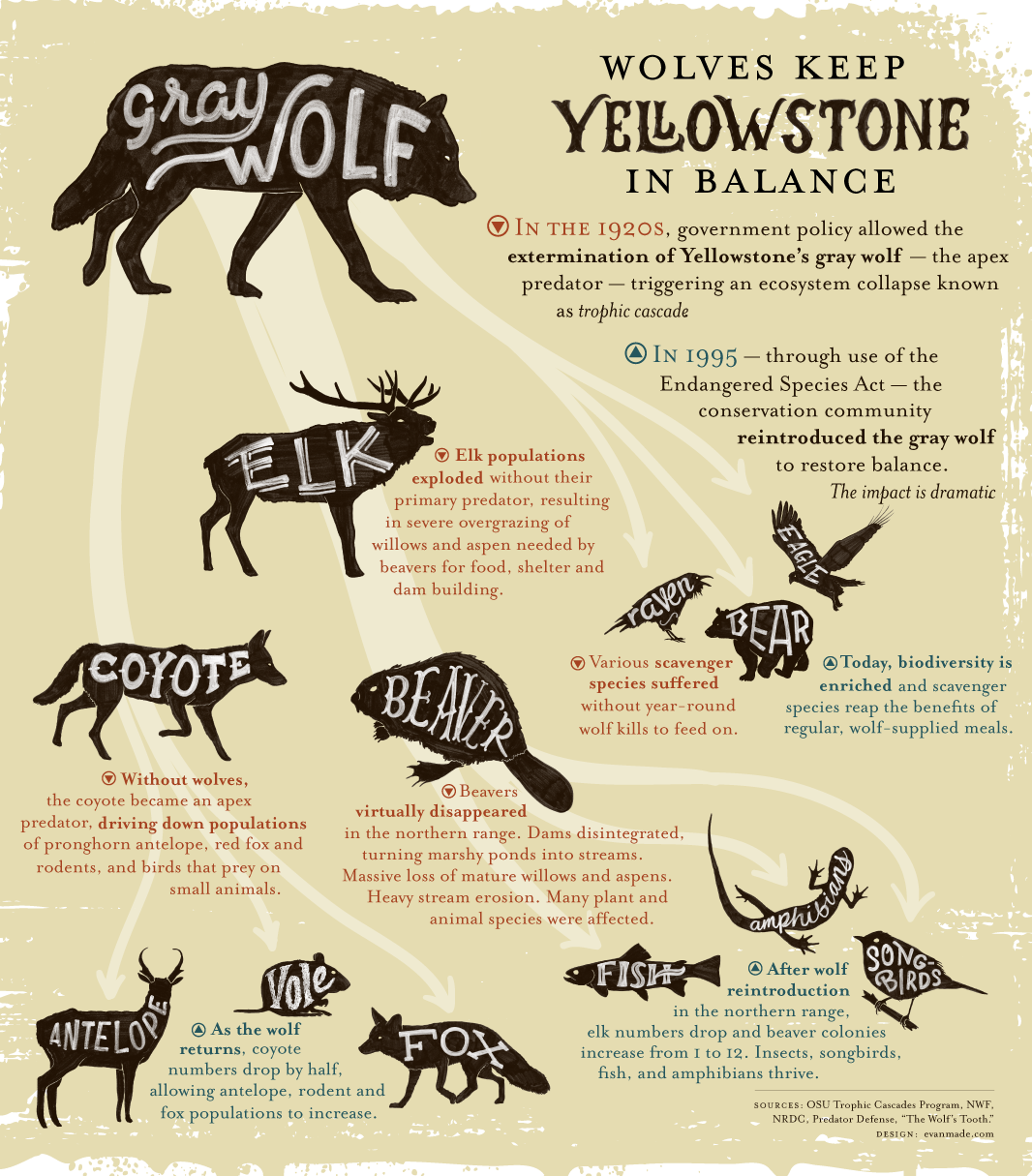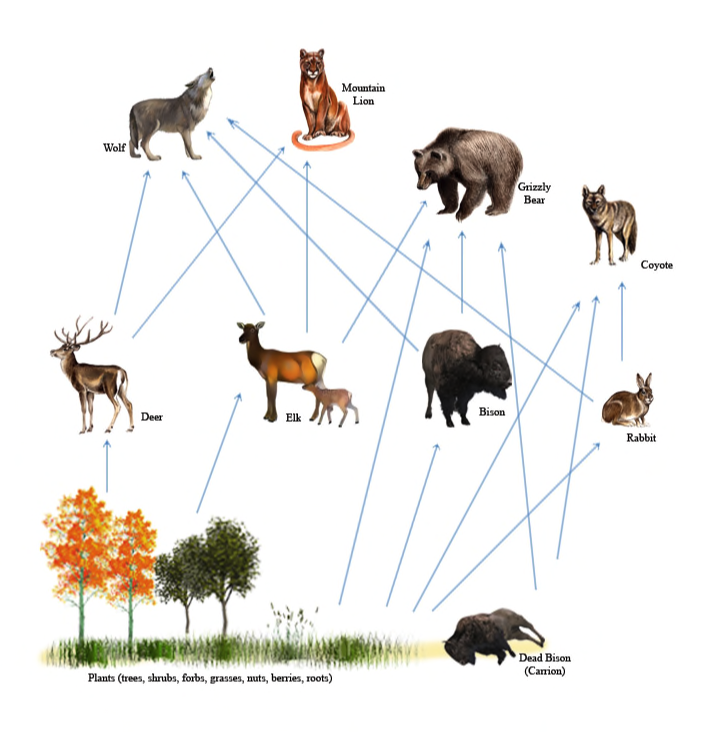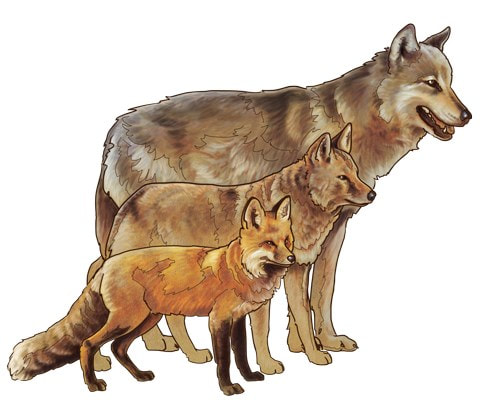|
Since the 1995 reintroduction of wolves in Yellowstone, wolves are causing a trophic cascade of ecological change, including helping to increase beaver populations and bring back aspen, and vegetation. Wolves are highly social animals that live in packs; pack sizes depend on the size and abundance of prey. In Yellowstone, ten wolves is an average pack size. The pack is a complex social family including older members (often the alpha male and alpha female) and subordinates. Each wolf has individual personality traits and roles within the pack. Packs defend their territory from invading packs by howling and scent marking with urine. Wolves Feed Other Animals: The remains of a carcass left behind, unfinished by wolves, help feed grizzly bears, bald eagles, wolverines and many other scavengers. Wolves consume a wide variety of large and small prey. They efficiently hunt large prey that other predators cannot often kill, like Bison. In Yellowstone, roughly 90% of their winter prey is elk and 10–15% of their summer prey is deer. Other animals benefit from wolf kills. Like when wolves kill an elk, ravens arrive almost immediately. Coyotes arrive soon after, waiting nearby until the wolves are sated. Bears are usually successful to chase the wolves away. Many other animals, from magpies to invertebrate, consume the decomposing remains. Discover the history of wolves in Yellowstone, including what happened to the ecosystem when they were eradicated and when they were reintroduced Jan 12, 1995: https://www.yellowstonepark.com/park/yellowstone-wolves-reintroduction The loss of a breeding wolf can affect the fate of the pack: In 2012, biologists at Denali National Park and Preserve noted a drop in wolf sightings following the death of a breeding female from a pack that lived along the Denali Park Road. This was one of several instances where the death of an individual wolf from legal trapping or hunting sparked widespread attention. "The death of a breeding wolf could harm the packs that provide the greatest opportunities for park visitors to see a wolf in the wild, either through a lack of reproduction or the loss of the entire pack." www.sciencedaily.com/releases/2014/07/140708103107.htm Biotic (living) and nonliving (abiotic) resources are linked by energy that flows through an ecosystem. Each tropic, or energy, level plays a role in an ecosystem. Food Webs demonstrate the flow of energy through an ecosystem; this helps illustrate how energy is lost between the tropic levels. Energy Pipeline shows how energy from the sun affects top predators such as owls and humans.
Wolves Strengthen Ungulates: Wolves cull sick, old and genetically inferior elk and deer, allowing the healthiest individuals to breed and perpetuate their species. Wolves Improve Riparian Areas: Wolves have redistributed the elk herds, allowing vegetation to recover along rivers and streams. More willows and aspens provide food for beavers. More beaver ponds benefit aquatic plants and animals. Shade from the trees cools the water, making the habitat better for trout. Wolves Decrease Coyote Populations: Wolves kill coyotes, so rodent populations increase, benefiting struggling birds of prey. Also, with fewer coyotes, pronghorn antelope calves are less likely to be preyed upon. Wolves Boost Ecotourism: The reintroduction of wolves to Yellowstone has attracted thousands of new visitors each year, adding millions to the local economy annually. Educational Materials ODNR/Ohio Division of Wildlife: http://wildlife.ohiodnr.gov/education-and-outdoor-discovery/conservation-education-project-wild/education-materials
Mammals of Ohio Field Guide: http://wildlife.ohiodnr.gov/portals/wildlife/pdfs/publications/id%20guides/pub344.pdf "I've learned that people will forget what you said, people will forget what you did, but people will never forget how you made them feel." -Maya Angelo
0 Comments
|
Details
Author:
|
||||||||
|
|
Contact:PHONE: (513) 695 - 1337
EMAIL: [email protected] HOURS: Monday - Friday 7:30am - 4:00pm (except holidays) Connect:Warren County Soil & Water Conservation District Copyright © 2016
Warren SWCD Privacy Notice. Emails are serviced by Constant Contact. Constant Contact's Privacy Notice. |
